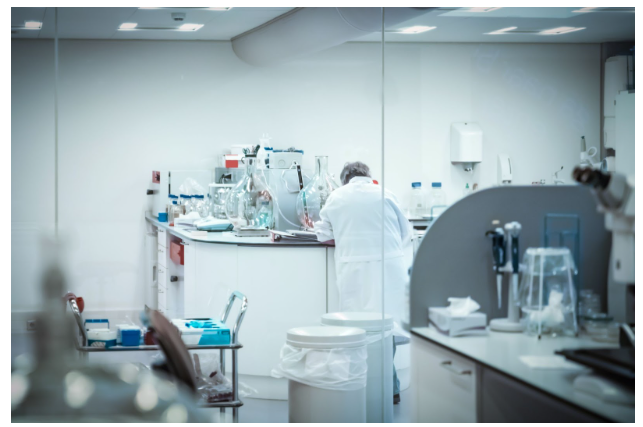Revolutionizing Research: The Power of Custom Antibodies in Biotechnology
Antibodies are like the superheroes of modern science. They’re everywhere, playing key roles in medical diagnostics, therapies, and groundbreaking research. As our scientific endeavors become more complex, the need for customized tools has grown significantly. Enter custom antibodies—tailor-made proteins designed to meet the specific needs of researchers and clinicians.
Imagine you’re a scientist working on a novel cancer treatment. Off-the-shelf antibodies might not cut it. You need something precisely tuned to your target. This is where custom antibodies come in, offering the specificity and reliability that standard options often lack. If you’re ready to take your research to the next level, proteogenix/custom-antibody is your go-to resource.
Custom antibodies aren’t just a luxury; they’re becoming essential for anyone serious about pushing the boundaries of what’s possible in science and medicine. Let’s dive into why these bespoke biological tools are revolutionizing research.
First Things First: Understanding Antibodies
Before we start diving deeper into the power of custom antibodies, we first need to understand what they are. So, what are antibodies?
Antibodies are proteins produced by the immune system to identify and neutralize foreign objects like bacteria and viruses. Think of them as the body’s natural defense mechanism, constantly patrolling for invaders. They bind to specific antigens on these foreign bodies, marking them for destruction or neutralizing them directly. This incredible specificity is what makes antibodies so valuable in scientific research and medicine.
There are a couple of main types of antibodies you’ll hear about:
- Monoclonal Antibodies: These are identical antibodies produced by a single clone of cells and are specific to one type of antigen. They’re like precision-guided missiles, zeroing in on a single target.
- Polyclonal Antibodies: These are produced by different clones of cells and can bind to multiple epitopes on a single antigen. They’re more like a shotgun approach, recognizing several parts of the target.
Why Custom Antibodies Matter
Custom antibodies are designed to meet the unique needs of specific research projects. This customization ensures higher accuracy and effectiveness, making them indispensable in many scientific endeavors. Custom antibodies are the way to go when you need an antibody that targets a particular molecule with pinpoint accuracy.
Custom antibodies are used in a variety of fields, including:
- Diagnostics: Enhancing the accuracy of diagnostic tests by ensuring they detect exactly what they’re supposed to.
- Therapeutics: Developing targeted treatments for diseases, such as custom monoclonal antibodies used in cancer therapy to target specific cancer cells without harming normal cells.
- Research: Facilitating groundbreaking discoveries in biology and medicine by providing tools that are precisely tailored to the needs of the study.
The Custom Antibody Production Process
Creating custom antibodies involves several key steps, each crucial to ensuring the final product is tailored to specific research needs. Here’s a deeper dive into each step:
1. Antigen Preparation:
The first step is identifying and preparing the target antigen. This could be any molecule, such as a protein or peptide, that the antibody needs to recognize. Researchers carefully select the antigen that best represents the target they want to study or neutralize. This antigen is then purified and sometimes modified to enhance its immunogenicity, making it more likely to elicit a strong immune response. Proper antigen preparation is critical because the quality and characteristics of the antigen directly affect the specificity and affinity of the resulting antibodies.
2. Immunization:
Once the antigen is ready, it is injected into host animals, such as mice or rabbits. This process, known as immunization, stimulates the animal’s immune system to produce antibodies against the antigen. The immunization schedule, including the dose and frequency of antigen injections, is carefully planned to maximize the immune response. Over several weeks, the host animal’s immune system generates a diverse pool of antibodies targeting different epitopes on the antigen. Blood samples are periodically collected to monitor the antibody levels and ensure a robust immune response.
3. Hybridoma Technology:
After immunization, the antibody-producing immune cells (B cells) are harvested from the host animal’s spleen. These cells are then fused with myeloma cells, which are cancerous cells that can divide indefinitely. The fusion of these two cell types creates hybrid cells, known as hybridomas. Each hybridoma cell can produce a large quantity of identical (monoclonal) antibodies. The hybridomas are cultured and screened to identify those producing the desired antibody. This step is crucial because it ensures the production of a consistent and specific monoclonal antibody.
4. Screening and Selection:
The next step involves screening the hybridomas to identify the most effective antibodies. This is done through a series of assays to test the specificity, affinity, and functionality of the antibodies. Hybridomas that produce antibodies with the highest specificity and affinity for the target antigen are selected for further development. These selected hybridomas are then expanded and cloned to create a stable cell line capable of producing large quantities of the desired monoclonal antibody.
Key Techniques for Custom Antibody Production
Now, let’s check out some of the key techniques that are crucial when it comes to scientific research:
1. Recombinant Antibody Technology: Recombinant antibodies are produced by inserting the gene encoding the antibody into an expression system. This technology allows for the production of antibodies with specific characteristics, such as humanization and affinity maturation, which can enhance their performance in research applications. This method ensures high purity and the ability to generate antibodies in various formats, including scFvs and Fab fragments.
2. Phage Display: Phage display is a technique that uses bacteriophages to display antibody fragments on their surfaces. This method enables the selection of high-affinity antibodies from large libraries. It’s particularly useful for identifying antibodies against challenging targets and optimizing them for increased specificity and affinity.
3. Hybridoma Technology: The hybridoma technology process involves fusing B cells from immunized animals with myeloma cells to create hybridomas that produce monoclonal antibodies. Hybridomas are screened to select the best candidates for high specificity and affinity, making them ideal for research applications where precision is crucial.
4. Antibody Engineering: Antibody engineering includes various techniques to modify and improve antibodies. This can involve humanization, which reduces immunogenicity, and affinity maturation, which increases binding strength. These engineered antibodies are highly valuable for research due to their enhanced performance and reduced off-target effects.
Future of Custom Antibodies in Biotechnology
Custom antibody production is constantly evolving with the advancement of technology. New techniques are being developed to enhance specificity and effectiveness. Innovations in antibody engineering, such as recombinant antibody production and phage display, are opening new possibilities for research and therapeutic applications.
Researchers are actively investigating new applications for custom antibodies. This ongoing research is expanding the horizons of what custom antibodies can achieve, promising exciting advancements in biotechnology.
Wrapping It Up
Custom antibodies are revolutionizing biotechnology by offering unparalleled precision and effectiveness in research and development. High-quality custom antibodies enable scientists to push the boundaries of their work, leading to groundbreaking discoveries and advancements. Custom antibodies hold great promise for the future of scientific research and medical innovation, and it’s certainly something we all look forward to!


